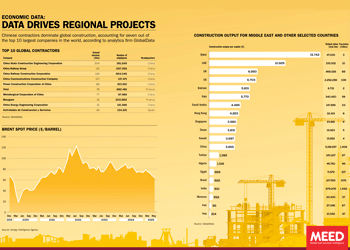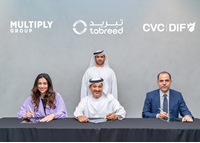Region on the cusp of EV production boom
2 August 2024

Energy and economic diversification programmes, not to mention ambitious industrialisation plans, have spurred investments in domestic battery electric vehicle (EV) manufacturing and assembly.
As of July, in Saudi Arabia and the UAE there were at least seven projects related to the construction of EV manufacturing and assembly plants, and two schemes for facilities that will assemble or manufacture hydrogen-powered vehicles. These projects have a total combined capacity of close to 400,000 vehicles annually.
Those setting up their manufacturing and assembly lines in the Gulf states plan to produce EVs for domestic as well as export markets, mainly in Africa.
Each manufacturer targets a defined segment of the evolving market, from entry-level to high-end passenger vehicles and electric trucks.
Saudi sovereign wealth vehicle, the Public Investment Fund (PIF), is a partner and investor in three of these brands: US-headquartered Lucid Motors, Saudi Arabia's Ceer and South Korea’s Hyundai.
Construction work is under way for the SR5bn ($1.3bn) first phase of Ceer’s 170,000 vehicles-a-year production plant in King Abdullah Economic City (KAEC) in Jeddah.
Ceer is a joint venture of the PIF and Taiwan-based Hon Hai Precision Industry Company, which is also known as Foxconn.
Lucid Motors aims to capture the high-end market and is also building its first assembly plant in KAEC, targeting a production capacity of 5,000 cars a year. This will be expanded to 150,000 from 2025 to support the kingdom’s goal of producing 500,000 EVs, and for EVs to account for 30% of new car sales in Saudi Arabia, by 2030.
“We will be expanding rapidly into the other GCC states as well,” a Riyadh-based executive with the California-based EV startup tells MEED.
He says constant and rapid innovation, particularly in terms of battery and charging technologies, will likely provide the tipping point for many consumers to shift from internal combustion engine (ICE) vehicles to EVs.
“Our fast charger today requires no more than 12-13 minutes to get you 300 kilometres. This means you may need to charge your car only once a week for city driving.
“The Lucid Air Sapphire is also one of the most powerful sedans in production today, capable of hitting 100 kilometres an hour in around 2 seconds,” he adds.
In search of lithium
Today’s EVs run on lithium-ion batteries, and Australia, Chile and China dominate global lithium production. As such, securing a global supply chain for locally manufactured EVs has become a top priority for Saudi Arabia.
The kingdom’s Industry & Mineral Resources Minister Bandar Al-Khorayef travelled to the Chilean capital of Santiago in late July to meet with several ministers of the world’s second-largest lithium producer to discuss ways to bolster cooperation in the industrial and mining sectors and lithium production.
Alkhorayef also met with Ruben Alvarado, the chief executive of Chile’s main copper producer, Codelco, to discuss investment opportunities in mineral production, particularly lithium and copper.
According to industry experts, the potential deals that Alkhorayef planned to secure might not necessarily involve importing lithium from Chile to Saudi Arabia. Rather, they could pertain to Saudi Arabia wanting to establish an integrated vertical supply chain for industries that it plans to build that require the mineral.
Notably, Saudi Arabia is also exploring domestic lithium production.
Saudi Arabian Mining Company (Maaden) has undertaken a pilot project that successfully extracted lithium from seawater, although not at commercially viable levels.
In July, Maaden signed an agreement with US-based Ivanhoe Electric to explore the Arabian Shield zone in Saudi Arabia – which is approximately the size of Switzerland – for high-demand minerals, including lithium.
Australia-headquartered EV Metals Group has also announced the completion of an initial exploration programme at the Balthaga lithium project in Saudi Arabia. The project is located 450 kilometres east of Jeddah in the south-east of the Arabian Shield.
Demand drivers
In addition to clear regulations, factors such as price competitiveness, a wider variety of EV models and innovative ownership models will be crucial in driving demand across the region, according to experts.
A study by global consultancy PwC suggests that there are just 56 EV models available in the UAE in 2024. This is equivalent to 7% of the total, with 731 ICE and hybrid models accounting for the rest.
This is in contrast to the trend in Europe, where there are 264 EV car models comprising 26% of the total. This ratio is expected to nearly triple to 71% by 2030.
“Consumers want what they want, not just what’s available,” says a senior business development executive with a UAE-based car distributor. “The younger consumers also do not want to own cars, they prefer a subscription model, so we need to cater to these requirements.”
Manufacturers and their local partners appear to be heeding these sentiments. Distributors in the UAE for leading brands including Tesla and BYD have launched car lease programmes, which allow consumers to make monthly payments over a fixed period, at the end of which they return the EV to the supplier.
This scheme suits consumers that want to upgrade their cars every few years and prefer the convenience of separate insurance and maintenance bills.
Major investments in local EV production, such as those being made in Saudi Arabia and the UAE, can also help to guarantee a greater variety of car models that are designed to cater to local preferences, weather and purchasing power.
Exclusive from Meed
-
 June 2025: Data drives regional projects
June 2025: Data drives regional projects30 June 2025
-
 UAE-Turkiye financial links strengthen
UAE-Turkiye financial links strengthen30 June 2025
-

-
 Iraq approves Basra housing project
Iraq approves Basra housing project30 June 2025
-
 Meraas announces Dubai City Walk expansion
Meraas announces Dubai City Walk expansion30 June 2025
All of this is only 1% of what MEED.com has to offer
Subscribe now and unlock all the 153,671 articles on MEED.com
- All the latest news, data, and market intelligence across MENA at your fingerprints
- First-hand updates and inside information on projects, clients and competitors that matter to you
- 20 years' archive of information, data, and news for you to access at your convenience
- Strategize to succeed and minimise risks with timely analysis of current and future market trends

Related Articles
-
 June 2025: Data drives regional projects
June 2025: Data drives regional projects30 June 2025
Click here to download the PDF
Includes: Top 10 Global Contractors | Brent Spot Price | Construction output
To see previous issues of MEED Business Review, please click herehttps://image.digitalinsightresearch.in/uploads/NewsArticle/14171168/main.gif -
 UAE-Turkiye financial links strengthen
UAE-Turkiye financial links strengthen30 June 2025
 This package on UAE-Turkiye relations also includes:
This package on UAE-Turkiye relations also includes:> UAE-Turkiye trade gains momentum
> Turkiye’s Kalyon goes global

Turkish bank DenizBank is one of Turkiye’s leading private banks and, as a wholly owned subsidiary of Emirates NBD since 2019, it is playing a leading role in developing business links between the UAE and Turkiye.
Recep Bastug, who was appointed as DenizBank’s CEO in 2024, says there is great potential for trade between the two countries.
“Turkiye is a growing country,” he says. “We’ve had volatility over the past five years, but the Turkiye economy and the banking sector have been able to manage those periods successfully.”
Having spent years with international institutions such as BBVA, Bastug has vast experience in the banking sector. “Turkish banks, especially private ones like DenizBank, are very successful. In terms of capital, balance sheet structure and digital transformation, we are in a strong position,” he says.
 Solid fundamentals
Solid fundamentalsTurkiye’s fundamentals remain solid with a diversified export-oriented economy, a young and skilled population of 85 million, and relatively low debt levels. “We are not a highly leveraged country. Our household debt-to-GDP ratio is low. With the right policy mix, we offer high potential for foreign investors,” says Bastug.
That potential is increasingly being realised through growing engagement with the GCC and the UAE. “Turkiye’s connection with the Gulf is going up, and DenizBank is set to play a serious role in these relations. Day by day, Turkish companies are expanding their footprint in the region.”
GCC projects
Baştug says that many of these companies approach DenizBank to help facilitate their entry into Gulf markets. “Some of our clients are extremely well capitalised, but others need support for major projects. Just recently, one Turkish company announced a $3bn project in the region. We’re helping them connect with Emirates NBD and navigate the local financial landscape.”
DenizBank is actively supporting the creation of trilateral partnerships – particularly between Turkiye, the UAE and Saudi Arabia. “We see huge opportunity in forming financial strongholds across these markets, leveraging Turkiye’s contractor experience, the UAE’s capital and Saudi Arabia’s scale,” says Baştug.
DenizBank is already delivering results. “With Emirates NBD, we’ve identified 10 strategic cooperation areas, including trade finance, payments and capital markets. Thanks to this partnership, Emirates NBD has become the number one debt capital markets bank in Turkiye, even ahead of global players.”
One area of growing activity is initial public offering (IPO) participation. “We’ve launched a mutual fund that allows Turkish private banking clients to participate in IPOs from the region, including from the UAE and Saudi Arabia. It’s a diversification strategy and helps retain wealth within the group.”
Turkiye’s connection with the Gulf is going up, and DenizBank is set to play a serious role in these relations. Day by day, Turkish companies are expanding their footprint in the region
Recep Bastug, DenizBankInflation ends
Despite the current inflationary environment, Bastug says there is a clear inflection point ahead. “We expect 2027 to be a turning point. Once we exit the inflationary accounting regime [in Turkiye], DenizBank will become one of the biggest contributors to Emirates NBD’s global balance sheet. Last year, we contributed $1.2bn. In 2027, it will be significantly more.”
DenizBank is the fifth-largest private bank in Turkiye with about a 5% market share. “The largest private bank is at 13%. It’s not easy to close that gap – but we will do it. Our long-term goal, aligned with our shareholder, is to become the biggest and most successful private bank in the country.”
The bank is especially focused on agriculture, SMEs, and export financing – sectors that are deeply relevant to
Turkiye’s economic growth and to regional demand. “We are the leading agricultural bank in Turkiye, and we believe strongly in the sector’s future – both for local consumption and exports.”Regional opportunities
Bastug also sees potential for engagement beyond the GCC, including in post-conflict reconstruction. “In the past, Turkiye had strong trade volumes with Syria. Even during wartime, commercial links remained. Once a stable environment emerges, there will be opportunities – especially in infrastructure.”
While a physical branch presence is not currently being considered, DenizBank is prepared to support Turkish contractors operating in neighbouring countries. “We have the relationships and expertise to facilitate this growth. And culturally, we’re well aligned with the region – it helps make business smoother.”
As Turkiye re-establishes economic momentum and Gulf economies look to deliver on long-term visions, DenizBank is positioning itself for a more active role in the region in the future. “We are preparing the bank for the next stage, and with the backing of Emirates NBD, we’re confident in our ability to lead.”
READ MORE
> UAE-Turkiye trade gains momentum
> Turkiye’s Kalyon goes globalhttps://image.digitalinsightresearch.in/uploads/NewsArticle/14170372/main.gif -
 Multiply agrees to sell Pal Cooling to Tabreed and CVC
Multiply agrees to sell Pal Cooling to Tabreed and CVC30 June 2025
Abu Dhabi-based investment company Multiply Group has agreed to sell all of its shares in its district cooling subsidiary Pal Cooling Holding (PCH) for AED3.8bn ($1bn) to a consortium comprising Engie-backed National Central Cooling Company (Tabreed) and CVC DIF.
The transaction is still subject to regulatory approvals.
MEED exclusively reported in May that a team comprising Tabreed and CVC was holding exclusive discussions to acquire PCH.
Multiply Group initially acquired a 100% stake in PCH and its subsidiaries in July 2021.
Multiply Group has been advised by Standard Chartered and Clifford Chance. Tabreed and CVC DIF have been advised by Citi, Synergy Consulting and White & Case.
The transaction brings together two of the UAE’s leading district cooling players. PCH was founded in 2006 and operates five active district cooling plants across the UAE. The company maintains eight long-term concessions and strategic partnerships with some of the UAE’s leading real estate developers, servicing key residential, commercial and mixed-use developments – most notably on Abu Dhabi’s Reem Island.
Tabreed owns and operates 92 plants, including 76 in the UAE, five in Saudi Arabia, eight in Oman, one in Bahrain, one in India and one in Egypt, in addition to other international projects and operations.
https://image.digitalinsightresearch.in/uploads/NewsArticle/14170511/main.jpg -
 Iraq approves Basra housing project
Iraq approves Basra housing project30 June 2025
Iraq has approved plans to build a housing project in Basra that will offer about 5,000 homes in the first phase to tackle the country’s rising housing shortage.
The project, which is endorsed by Iraq’s National Investment Commission (NIC), will cover an area of about 3 square kilometres.
According to local media reports, Basra province governor Asaad Al-Idani said the project has already been awarded to a developer.
Iraq has been gradually recovering since the war. The government initially prioritised infrastructure and public housing to stimulate economic growth, improve living standards and attract foreign investment.
More recently, benefitting from higher oil prices and a period of relatively stable governance, Baghdad has expanded its focus to reconstructing and modernising the country’s deteriorating infrastructure.
The Iraqi construction market has also seen significant investments from private real estate developers from the region. In May, Egyptian real estate developer Ora Developers announced that it had started construction on the Al-Wardi residential city project, which consists of more than 100,000 residential units covering about 61 million square metres (sq m) on the southeastern side of Baghdad.
The move is the latest sign of international investors’ growing appetite for developing real estate in Iraq as part of the country’s post-war building initiatives.
Also in May, another Egyptian firm, Talaat Moustafa Group Holding, said it was in negotiations with the NIC to develop a mixed-use project. The project, which will cover an area of about 14 million sq m and will be located in the southwest of Baghdad, is expected to contain about 45,000 residential units.
The positive sentiment has been particularly buoyed by a robust 2024 budget, which allocated nearly $42bn to transport, social infrastructure and housing initiatives.
Looking ahead, Iraq’s construction industry is expected to register an annual average growth rate of 4.9% in 2025-28, supported by further investments in energy, infrastructure and housing projects, according to UK analytics firm GlobalData.
MEED’s June 2025 report on Iraq includes:
> COMMENT: Iraq maintains its pace, for now
> GOVERNMENT & ECONOMY: Iraq’s economy faces brewing storm
> OIL & GAS: Iraqi energy project value hits decade-high level
> PIPELINES: Revival of Syrian oil export route could benefit Iraq
> POWER: Iraq power sector turns a page
> CONSTRUCTION: Iraq pours billions into housing and infrastructure projects
> DATABANK: Iraq forecast dips on lower oil priceshttps://image.digitalinsightresearch.in/uploads/NewsArticle/14170011/main.png -
 Meraas announces Dubai City Walk expansion
Meraas announces Dubai City Walk expansion30 June 2025
Register for MEED’s 14-day trial access
Local real estate developer Meraas has announced the City Walk Crestlane project as it continues to expand its City Walk residential community in the Al-Wasl area of Dubai.
The City Walk Crestlane comprises two residential towers offering 198 one-, two-, three-, four- and five-bedroom units.
The project is expected to be completed and handed over by the third quarter of 2028.
Earlier this month, Meraas, which is part of Dubai Holding Real Estate, awarded a construction contract for another project at City Walk.
The local firm Naresco Contracting was awarded a AED450m ($123m) contract for the main construction works on its Central Park Plaza residential project at City Walk.
The project involves constructing two towers with 23 and 20 floors. Together, they will have 212 residential units.
In May, Meraas awarded another local firm, Al-Sahel Contracting Company, a AED300m contract for the main construction works on Elara, which is phase seven of the Madinat Jumeirah Living masterplan in Dubai.
The project involves building three residential towers with 234 apartments.
https://image.digitalinsightresearch.in/uploads/NewsArticle/14169472/main.jpg


